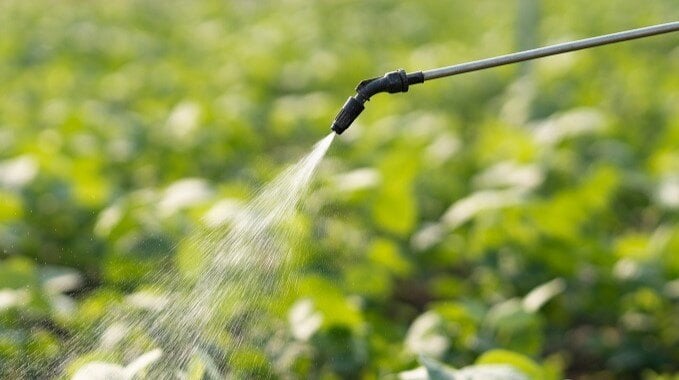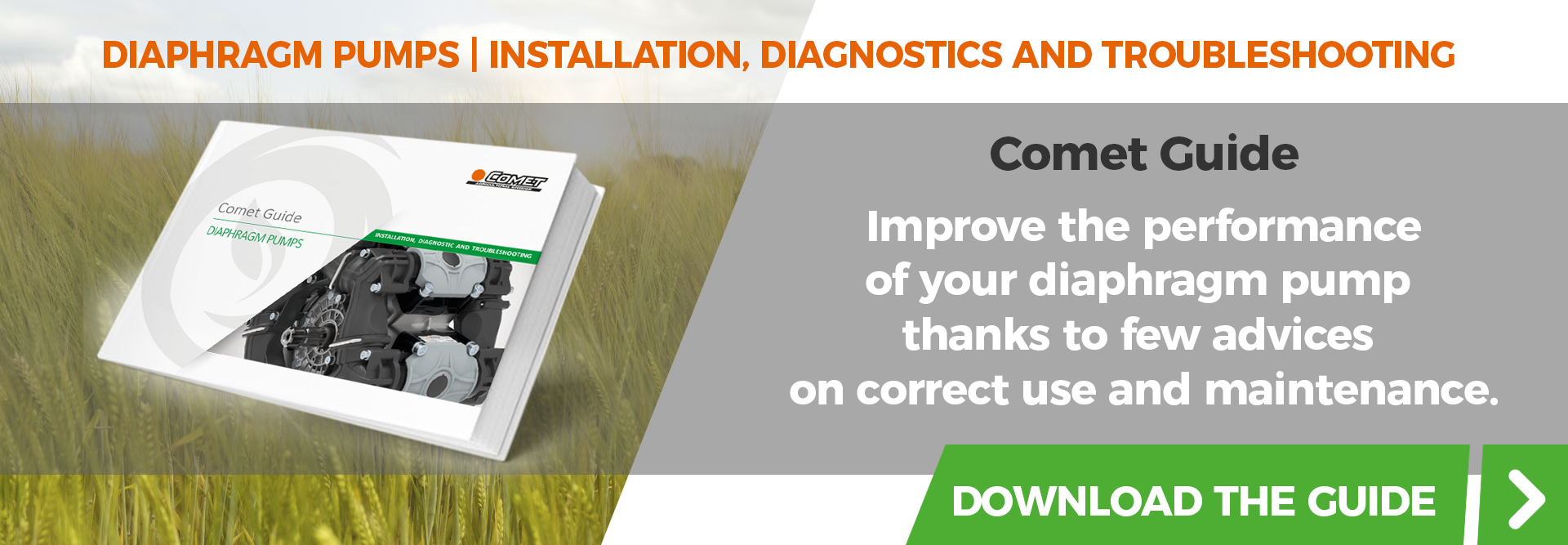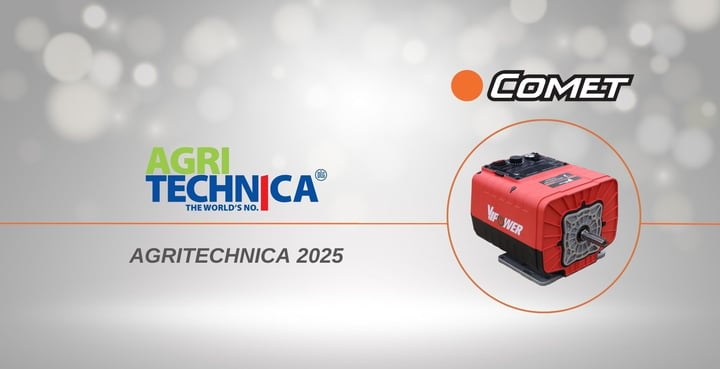Air blast sprayers and boom sprayers, fed by the diaphragm pumps, are tools that find a lot of uses in agriculture.
Among these, especially in more recent times, spot spraying is gaining wide acceptance: let’s find out, in this article, how this system works for localized application of weedkillers and other plant protection products.
SPRAYERS, AIR BLAST SPRAYERS AND DIAPHRAGM PUMPS FOR AGRICULTURE
Spraying and weed control are two phases of the agricultural work, aimed at protecting crops from pests, which make use of tools - sprayers and air blast sprayers - based on high- and low-pressure diaphragm pumps.
READ: DIAPHRAGM PUMPS: WHAT THEY ARE AND HOW THEY WORK
The three main advantages of using a diaphragm pump in agriculture:
- Excellent priming and self-priming
- Good dry running
- Mechanical and chemical resistance.
These features make diaphragm pumps ideal for treatments of cereal crops, vegetables, orchards, vineyards and olive groves.

Depending on the pressure they produce, agricultural pumps can be divided into:
- Low-pressure pumps (up to 20 bar): intended for application on boom sprayers for the treatment of field crops such as cereals, tomatoes and vegetables;
- High-pressure pumps (between 30 and 50 bar): used on air blast sprayers for the treatment of vineyards, orchards and olive groves.
THE RIGHT SPRAYING
After this brief overview of the tools and their basic operation, let’s now focus on the various types of spraying to understand which is the best one; let’s start with a basic question: what type of spraying should I do?
Once we understand what kind of work we need to do, in fact, we can then choose between large-scale and spot spraying and the corresponding tools to carry them out: these, therefore, are the two types of spraying available.
Large-scale spraying is, par excellence, suitable for covering large areas in a short time; on the other hand, spot spraying is better suited for more punctual interventions over isolated areas. It would come naturally, especially for weed control, to assume that the first option is anytime and anyhow faster and more effective, assuming that the more product is sprayed the better result is achieved.

Instead, there are several factors against large-scale spraying: for example, a greater volume of weed killer sprayed per weed corresponds to more runoff and less retention on the leaf. In addition, if selective herbicides are not used, a large area of vegetation around it is attacked in addition to the unwanted weed.
These are some of the reasons why spot spraying systems are becoming increasingly popular.
WHAT IS SPOT SPRAYING
Spot spraying, or localized spraying, is a very precise system for applying weed killers and other plant protection products while limiting unwanted effects.
This method involves the use of an applicator that makes targeted sprays through special adjustable nozzles. In this way, the weed killer is only applied to the target plants and, depending on the product applied, to the soil immediately around the stems, so that it penetrates the plant through the roots, while preventing the weed seeds from germinating.

The advantages of spot spraying
Targeted spraying, therefore, is a useful tool for controlling invasive plants, along with other localized treatment methods such as injection into the stem and scrubbing that, at the same time, keep native and non-invasive plants healthy.
It is a useful practice in all situations, particularly for light and scattered infestations, while for medium- and high-density areas it is preferable to combine them with repeated follow-up measures.
Spot spraying treatments, therefore, are quick, effective and require limited amounts of weed killers, thus reducing treatment time and costs. This type of application also avoids soil disturbance and compaction, factors which are detrimental in the long run in invasive plant management.

Towards precision agriculture
We kept for the end what is identified as the main benefit of spot spraying systems: a significant reduction in environmental impact related to the reduction in the amount of plant protection products used compared to large-scale spraying.
Water resources benefit most of all, as the risk of groundwater contamination is reduced. Not surprisingly, more and more government agencies are encouraging the application of new precision agriculture technologies related to spot spraying.
Technological equipment for spot spraying has evolved considerably in recent years. There has been a shift from the use of nozzles with reduced spray and anti-drift angle to more advanced systems - from on-board detectors, GPS and artificial intelligence - that allow mapping, detecting and spraying only weeds, distinguishing between weeds and crops, and operate the individual nozzles on the sprayer independently to each other.
In an increasingly precise and effective manner, therefore, spot spraying is used to target only those areas colonized by weeds, saving plant protection products and reducing environmental damage.













